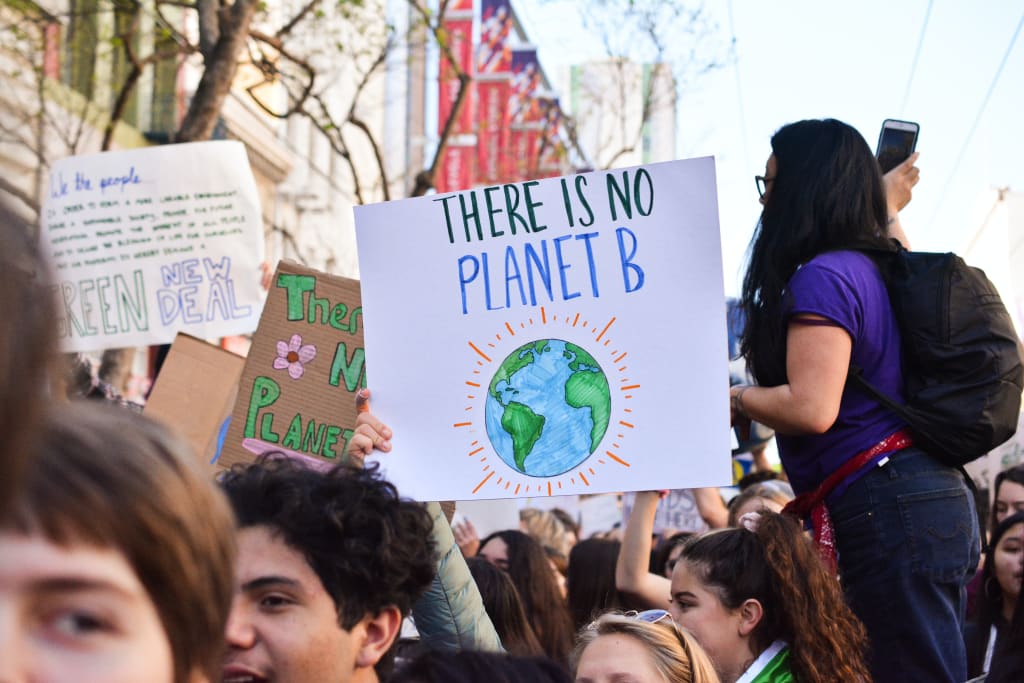Taking action against climate change to create a sustainable future
"Charting the Course to Climate Resilience: 10 Comprehensive Guide to Collective Action and Sustainable Solutions"

A comprehensive and coordinated effort is desperately needed to reduce and eventually stop climate change in light of the rapidly worsening climate disaster. Rising sea levels and more frequent and severe weather occurrences are two signs that the globe is warming. We must move decisively to reduce glasshouse gas emissions, save biodiversity, and promote international collaboration if we hope to ensure a sustainable future for future generations. This essay provides a road map for addressing climate change by highlighting both personal and societal accountability below
1. Changing to Sustainable Energy Sources
Making the quick switch from fossil fuels to renewable energy sources is essential to halting climate change. One of the main causes of glasshouse gas emissions, which trap heat in the Earth's atmosphere and cause global warming, is the burning of coal, oil, and gas. Our carbon footprint can be greatly decreased by utilizing and investing in renewable energy sources like solar, wind, and hydropower.
Through the implementation of laws that discourage reliance on fossil fuels, the subsidization of renewable technology, and the encouragement of clean energy projects, governments and corporations play a crucial role in expediting this shift. People can make a simultaneous contribution by deciding to power their homes with renewable energy sources, endorsing clean energy projects, and promoting environmentally friendly behaviors in their local communities.
2. Sustainable Land Use and Agriculture
Because of livestock production, artificial fertilizer use, and deforestation, the agriculture industry contributes significantly to glasshouse gas emissions. Regenerative farming and agroforestry are two examples of sustainable agriculture techniques that can be used to improve soil health, trap carbon, and preserve biodiversity.
Customers can help with this effort by switching to plant-based diets and locally sourced, organic items. The use of dangerous pesticides and fertilizers should be controlled, forests should be preserved, and sustainable farming methods should be encouraged.
3. Preservation and Planting Trees
In order to mitigate climate change, ecosystems—particularly forests—must be preserved and restored. By producing oxygen and collecting significant amounts of carbon dioxide, forests function as carbon sinks. But the logging, farming, and urbanization that drives deforestation erodes their ability to mitigate emissions.
It is crucial that large-scale regeneration programs and global forest conservation activities are carried out. Governments, corporations, and nongovernmental organizations (NGOs) can work together to put policies into place that stop deforestation, repair damaged areas, and support environmentally conscious forestry methods.
4. Sustainable Consumption and the Circular Economy
Reducing waste and minimizing environmental damage requires a shift to a circular economy, in which goods are made to be recycled, reused, or otherwise put to good use. This strategy reduces the amount of energy needed for manufacturing and minimizes the extraction of raw materials.
Customers may help by supporting businesses that practice sustainability, selecting products with minimum packaging, and adopting a reuse and recycling culture. Policies that encourage circular economy practices, including extended producer responsibility and recycling initiatives, can be put in place by governments.
5. Innovation in Technology and Carbon Capture
Achieving carbon neutrality requires investing in technological innovation, especially in carbon capture and storage (CCS) technology. By capturing carbon dioxide emissions from power plants and industrial operations, these devices stop the gas from entering the atmosphere.
Businesses may use carbon capture technologies to cut emissions, and governments should invest in research and development of these solutions. People can also back and push for laws that advance the creation and application of carbon capture technologies.
6. Awareness and Education about Climate Change
Teaching people about the consequences of their actions and creating a sense of urgency about the problem is an essential part of the battle against climate change. To create a society that is knowledgeable about sustainability and takes initiative in its approach, comprehensive climate education is needed at all levels, from community programs to educational institutions.
People can share their knowledge with others, study about climate change for the rest of their lives, and remain up to date on environmental matters. To encourage sustainable behaviors, governments ought to fund public awareness campaigns and give climate education top priority in school curricula. Demanding and supporting local and global measures that address climate change is more common among informed citizens.
7. International Cooperation and Diplomacy
Climate change is an international issue that calls for international cooperation amongst states. International accords and partnerships, like the Paris Agreement, serve as vital frameworks for establishing shared objectives and guaranteeing that nations cooperate to curtail emissions and adjust to the evolving environment.
Global efforts to prevent climate change must prioritize diplomacy and cooperation. Governments can work together on research projects, exchange technology and resources, and fortify international alliances. Achieving significant development on a global scale would require open communication and the promotion of cooperation.
8. Regulatory and Policy Frameworks
The laws and rules that direct environmental practices are largely shaped by governments. Industries and businesses must be steered towards more environmentally friendly practices through the implementation and enforcement of strict environmental standards, emissions targets, and sustainable development strategies.
By participating in advocacy campaigns, keeping legislators accountable, and remaining knowledgeable about environmental regulations, citizens may make a contribution. People may help create a regulatory environment that supports positive environmental change by supporting policies that encourage sustainability and electing leaders who prioritize climate action.
9. Financial Rewards for Eco-Friendly Behaviors
The environment is greatly impacted by economic systems, hence it is important to match financial incentives with environmentally friendly behavior in order to effectively promote change. Governments can encourage innovation and investment in sustainable technologies by offering tax breaks, grants, and subsidies to companies who implement eco-friendly practices.
By supporting companies that place a high priority on sustainability, consumers can in turn generate demand for goods and services that are favorable to the environment. An increasingly sustainable and circular economy is being driven by the market, and individuals can help with this by making sustainable choices and encouraging others to do the same.
10. Community Engagement and Grassroots Movements
When communities band together to solve local environmental challenges, change frequently starts at the grassroots level. Activist groups possess the ability to impact laws, increase public knowledge, and stimulate more extensive transformations. People can actually change their immediate surroundings by taking part in or starting local projects.
Local initiatives that may promote a bigger movement include community gardens, cleanup programs, and environmental awareness campaigns. In addition to encouraging a sense of shared responsibility, interacting with local communities can help develop creative, locally relevant responses to climate-related issues.
In summary
A comprehensive and cooperative strategy encompassing people, corporations, governments, and the international community is needed to stop climate change. Together, the measures listed here—which range from private initiatives to global collaboration—create a thorough plan for tackling the intricacies of climate change.
We can cooperate to create a future in which the earth is protected from the harmful impacts of climate change and its effects are lessened for future generations by implementing these actions into our daily lives, encouraging sustainable practices, and pushing for systemic change. By working together, all parties involved can create a resilient and sustainable world that will allow people to live in harmony with the environment. Now is the time to take action, and by working together, we can significantly alter the future course of our world.





Comments
There are no comments for this story
Be the first to respond and start the conversation.